8 Types of Greenhouses (with Pictures)
-
Pete Ortiz
- Last updated:
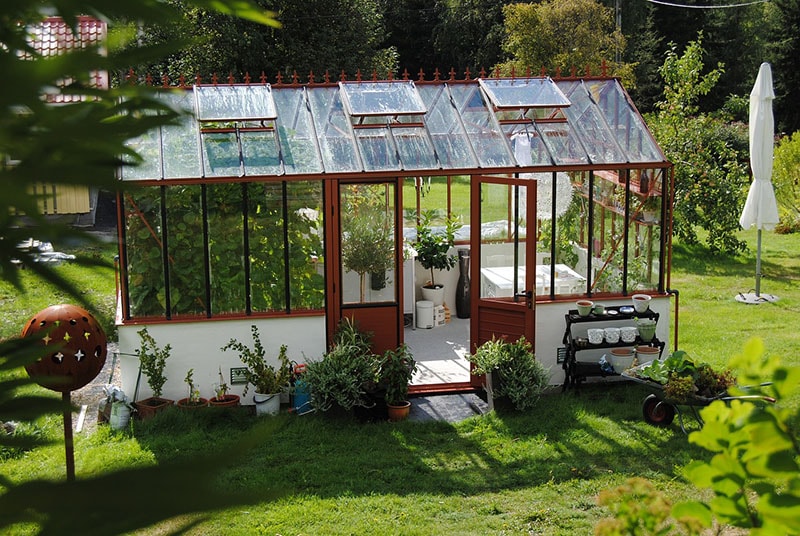
It’s impossible to practice greenhouse gardening without an actual greenhouse. And if you’d like to enjoy the experience, you’ll have to choose one that best caters to your needs. These structures come in every size, shape, and design. Meaning, you have to take into consideration a couple of factors before building one.
From our experience, the type of plant variety that you plan on growing will definitely influence your decision. The same decision will also be affected by the scale of production, in addition to your financial capability.
These varying designs have their own unique set of pros and cons. We noted that some are relatively more energy efficient, while others are just visually appealing.
In other words, if you don’t fully understand your greenhouse’s functionalities, it’s not you who will bear the brunt, but your plants.
The 8 Different Greenhouse Designs
1. Gable Roof

| Wall & Roof Material: | Glass |
| Frame Material: | Wood |
| Capital Intensive: | No |
The gable roof greenhouse design is all about versatility and efficiency. So, if getting that for your plants is your main priority, this is the type of greenhouse you need to invest all your resources in.
Thanks to the gable roof design, you’ll have the option of planting a wide variety of fruits and vegetables. The space that it provides is more than adequate, and the walls are translucent enough to ensure all plants receive the maximum amount of sunlight every day.
Courtesy of the high roof and straight walls, you’ll have more freedom to roam around—especially if you feel the need to tend to your garden regularly. Unlike other designs, constructing this one is pretty easy. They say you’ve got to have some level of experience to pull it off, but we think you could do it even without. The costs are also not exponentially high.
- Versatile
- Energy-efficient
- Adequate space
- Affordable
- Might not be an easy DIY build for some people
2. A-frame
| Wall & Roof Material: | Glass |
| Frame Material: | Wood, aluminum |
| Capital Intensive: | No |
An A-frame greenhouse design is incredibly good at conserving energy. And the shape itself makes them the ideal option for anyone looking to take advantage of solar energy.
Compared to the gable roof iteration, the A-frame’s interior square footage is less. If you’re wondering why some gardeners swear by it, it’s because this design is known to be self-sustaining. Even without outside help, it always finds a way of making sure that all your plants’ basic needs are met in a timely fashion.
In terms of aesthetics, it’s safe to assume that it’s an acquired taste. Some farmers and gardeners really love how it looks, while others not so much. Nonetheless, it’s still very popular, as it has a lot of headspace. Enough space to encourage vertical gardening, if you’re not scared to explore different possibilities.
Will you need an architect to help you out with construction? No. It’s a simple design that also happens to be very affordable. The only issue that we have with it is the airflow around the tight corners and edges—that airflow is not usually ideal for plants.
- Efficient at conserving energy
- Is self-sustaining
- Offers adequate space
- Exudes simplicity
- Affordable
- Doesn’t have the best airflow around the edges and corners
3. Hoop-House
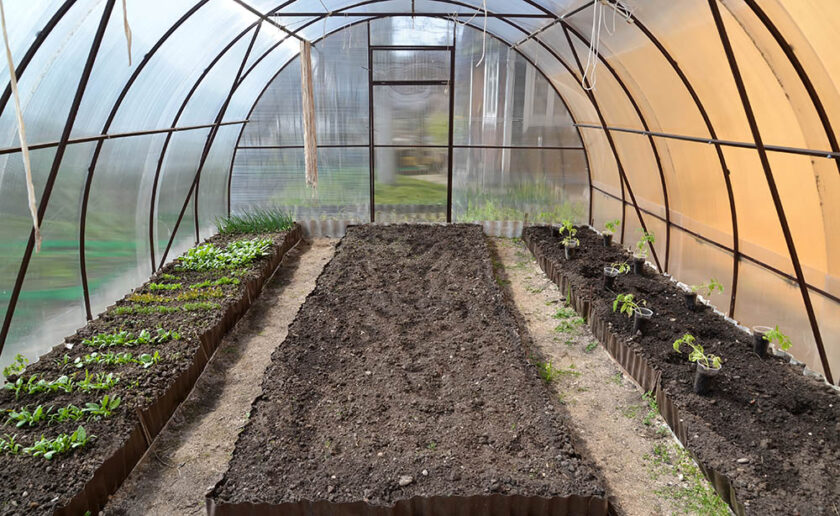
| Wall & Roof Material: | Polyethylene film, or Polyvinyl chloride film |
| Frame Material: | Plastic |
| Capital Intensive: | No |
The hoop-house design is called a “hoop house” because it’s often made using several hoops and plastic. There are so many other materials that you can use to make the hoops, but if you settle for plastic, it has to be thick.
It’s a fairly simple concept, hence the reason why it’s popular among gardeners. Adjustability and affordability are the main pros in this case, with insulation being the primary drawback. Be ready to work twice as hard to make sure the interior temperature is optimal at all times. Otherwise, your plants won’t survive past the seedling stage.
If the climate in your region is typically hostile, avoid a hoop house. You’ll battle to regulate the interior temperature if the exterior is experiencing extreme heat, or if it’s freezing cold.
- Easy to build
- Budget-friendly
- Easy to adjust
- Poor insulation
- Not ideal for extreme climates
4. Gothic Arch
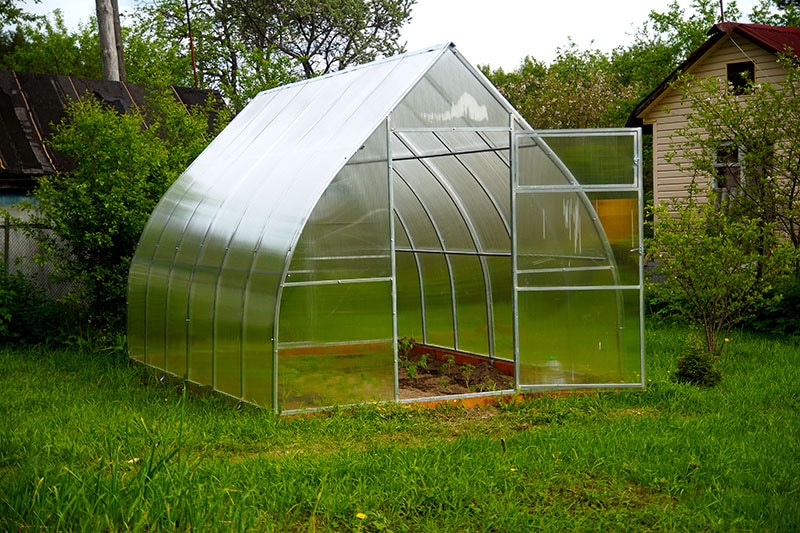
| Wall & Roof Material: | Polyethylene film |
| Frame Material: | Wood, bricks, steel |
| Capital Intensive: | Yes |
Prevalent in Europe since the 12th century, this architectural design is often characterized by asymmetry, curved stone buttressing, pointed arches, and high-vaulted ceilings.
Even though you won’t be able to procure the construction stones from the Middle Ages, whatever you decide to use will still give you an elegant, graceful structure that’s to die for.
Gothic arch greenhouses are not just liked for their aesthetics. They are also known to be efficient at absorbing light and shedding snow during precipitation. The design can easily cater to the needs of a large-scale farmer, as it doesn’t require the beam supports that take up space.
Speaking of, we don’t know if you knew this, but gothic buildings have a way of redistributing their weight without relying on columns and beams. Thus, they are considered open-plan architectural marvels.
- Looks elegant and classy
- Ideal for regions that experience cold a lot
- Efficient at absorbing light
- Provides adequate space
- Not DIY-friendly
- Expensive
5. Geodesic Dome
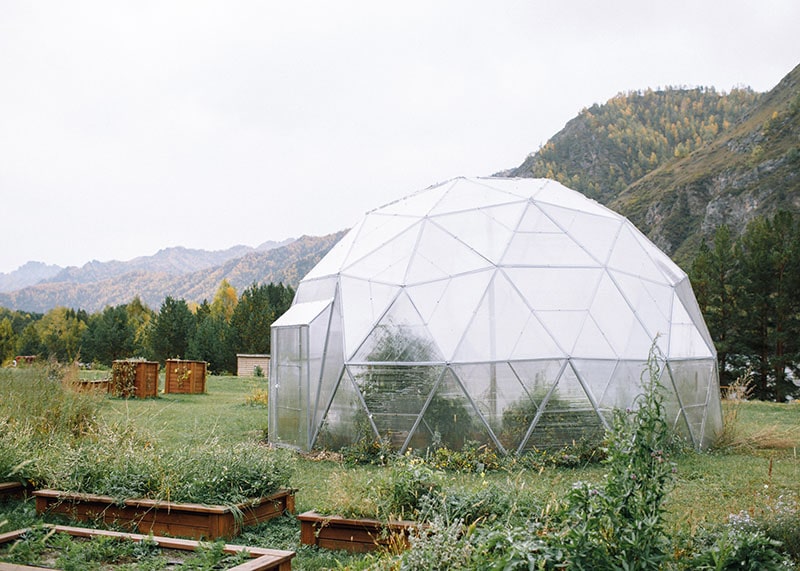
| Wall & Roof Material: | Glass |
| Frame Material: | Steel, aluminum |
| Capital Intensive: | Yes |
The geodesic dome greenhouse is also similar to the gothic arch in terms of weight redistribution. In addition, it normally delivers an energy-efficient environment that will help you cut down the time it takes to tend to the plants. With regard to the sturdiness of the construction, you have nothing to worry about. Sadly though, it’s not something we’d encourage you to build on your own.
Only a professional with a vast wealth of experience on the job can successfully put together this structure, as it often demands exceptional precision when it comes to angular measurements. If you manage to build one, your garden is guaranteed superior light exposure and optimal weather conditions.
- Energy-efficient
- Sturdy
- Promises adequate space
- Guarantees superior light exposure
- Expensive
- Not DIY-friendly
6. Lean-To Design
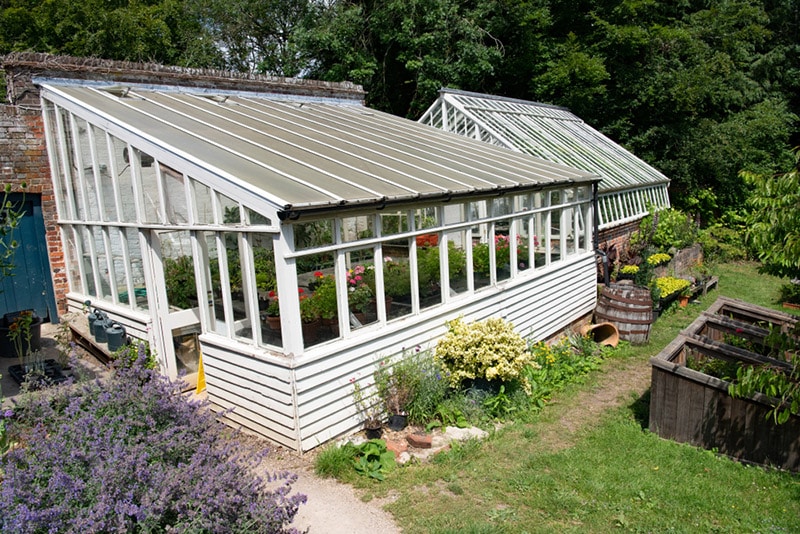
| Wall & Roof Material: | Glass |
| Frame Material: | Aluminum |
| Capital Intensive: | Yes |
This iteration is not a freestanding structure. So far, we’ve only discussed freestanding designs, but this particular one has to be attached to the wall of a different building to gain support. If we had to recommend it to someone, we’d pick a gardener who lacks sufficient gardening space in their backyard.
It’s also ideal for a farmer who resides in a region characterized by storms and winds since the house will offer that extra stability. During construction, you have to make sure that the wall that it’s going to be attached to is south facing. Or else you’ll end up with a greenhouse that’s doomed to fail due to inadequate sunlight.
- Suitable for stormy regions
- Ideal for backyard gardeners who have limited space
- Not a freestanding structure
7. Shade House
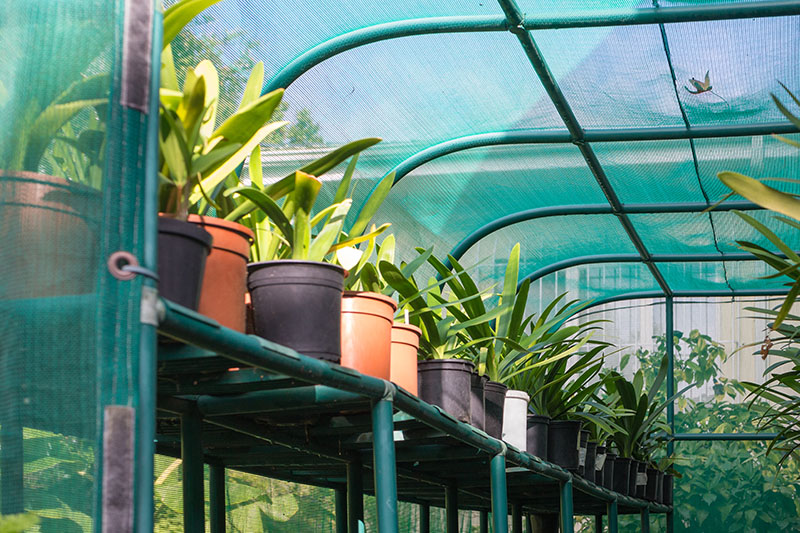
| Wall & Roof Material: | Shade Cloth |
| Frame Material: | Aluminum |
| Capital Intensive: | No |
We can all agree that the prime purpose of any greenhouse is to offer warmth and sunlight to the plants being grown. And they can do this by trapping some of the heat generated by the sun, as well as its light.
But what happens in a scenario whereby you have more than enough heat to go around? What if excess heat is the reason why growing your favorite fruit seems impossible?
If those are the kind of woes that you’ve been riddled with, give the shade house design a shot. It’s meant to deliver customizable levels of shade, by making use of its shade cloth, which filters out most of that heat or light.
Shade-house designs are mostly used to grow ferns and orchids because they are considered shade-loving plant varieties.
- Ideal for shade-loving plants
- Delivers optimal temperatures
- DIY-friendly
- Not suitable for many plant varieties
8. Sawtooth
| Wall & Roof Material: | Polyethylene film |
| Frame Material: | Steel |
| Capital Intensive: | Yes |
The sawtooth design has a sloped roof but one of the sides features a vertical gap. Were it not for the gap, which is there to provide maximum ventilation, one could easily mistake it for the gable roof or the arched dome greenhouse.
The original architect of this blueprint definitely wanted to work with wholesale farmers, as the design can accommodate so many plant varieties. To the small farmer, it’s not really cost-effective.
- Offers remarkable ventilation
- Caters to large-scale farmers
- Not suitable for small-scale farmers
- Requires intensive capital
Frequently Asked Questions (FAQs)
What Is the Best Cover Material for a Greenhouse?
Glass panels should be your go-to if you’re looking to build a permanent structure that’s well-equipped to deliver optimal conditions for your plants’ growth. Glass has always been considered the primary material because it allows the highest percentage of light in.
Nonetheless, you’ll still have to ensure the ventilation is at par with the requirements, or your plants will inevitably burn.
Why Do Greenhouses Need Ventilation?
Ventilation is an important aspect of the process, as it helps gardeners and farmers manage the humidity levels inside, as well as regulate the temperature. Without proper ventilation, the plant species won’t have the nourishment required to survive to maturity.
Do Greenhouses Need Supplemental Heating?
No, not usually. Even if the goal is to extend your growing season, the heat absorbed from the sun is more than enough to facilitate the growth of new plants. Unless, of course, you’re one of those people living in regions that experience freezing temperatures for the better part of the year. If that’s the case, you’ll have to look for an alternative.
Conclusion
Do not make the mistake of building a greenhouse before taking into account all the factors that might influence the interior atmosphere. Always think about the humidity levels, availability of sunlight, ventilation, and temperature.
If there’s something we’ve learned over the years, it’s the fact that each greenhouse designed is geared towards serving a specific purpose. For example, some are better suited to provide cooler temperatures, while others are styled to facilitate efficient airflow.
Featured Image Credit: Helena, Pixabay
Contents


